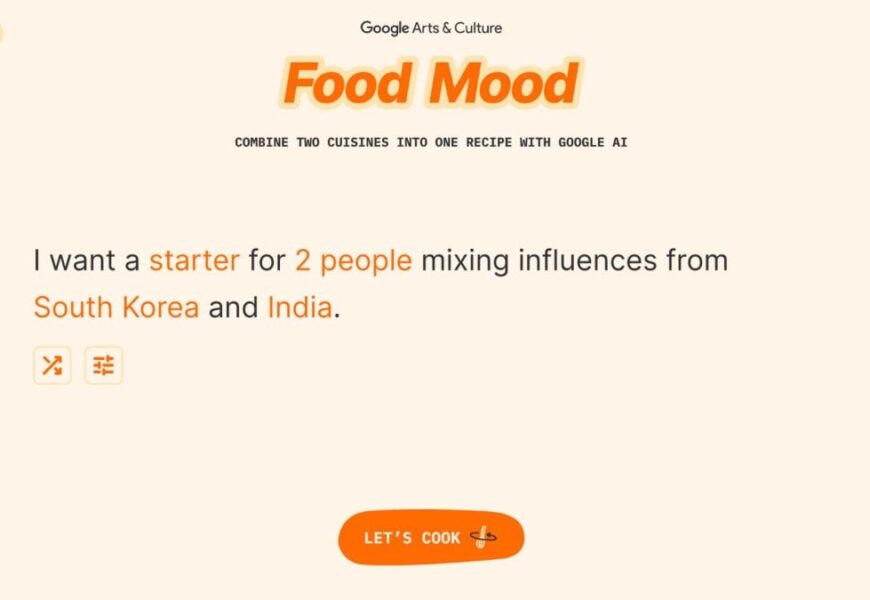Google Arts & Culture serves as the search giant’s platform for accessing high-resolution scans of artworks and cultural artifacts gathered from museums and archives globally. Similar to the broader company ethos, this sophisticated platform is not hesitant to explore artificial intelligence (AI) applications. Recently, a new feature has been introduced that aims to concoct a fusion recipe blending two distinct culinary traditions.
The rationale behind opting for AI to devise untested combinations such as Mexican and Chinese cuisines, rather than consulting a human chef with tasting expertise, remains a mystery. Nonetheless, for those intrigued by culinary experimentation, the Food Mood tool stands ready to suggest innovative dinner ideas.
Exploring the Fusion of Culinary Styles with Food Mood
Developed by artists at Google Arts & Culture Lab, Food Mood represents a creative AI experiment. This whimsical recipe generator merges elements from diverse culinary backgrounds to craft novel dishes. Contrary to initial skepticism, this initiative is not an elaborate April Fool’s Day prank by the tech giant.
While seasoned chefs refine their craft through years of training, culinary insights, and hands-on experience, Food Mood streamlines this process using generative AI. The project, spearheaded by artists Emmanuel Durgoni and Gaël Hugo, leverages Google’s Gemini 1.0 Pro powered by Vertex AI.
Navigating the online tool is straightforward and user-friendly. Users specify the desired dish type (starter, main course, or soup), serving size, and the culinary styles to blend (selecting from an extensive array of countries).
By clicking the Let’s Cook button, users can generate a customized recipe. Additionally, random recipes can be generated for a touch of spontaneity.
In a personal trial, I opted for a starter catering to two individuals, infused with influences from South Korean and Indian cuisines. The resulting recipes are relatively simple and manageable for home cooking endeavors.
Food Mood offers customization options for recipes. Users can access modifiers by clicking the slider icon on the main interface, indicating preferences like vegan, vegetarian, or gluten-free meals. Moreover, users can input up to three preferred ingredients using an auto-suggest feature.
 Credit: Screenshot by Saikat Basu
Credit: Screenshot by Saikat Basu
Each recipe is accompanied by a disclaimer:
This experiment leverages AI to stimulate culinary creativity. The recipes have not been curated by chefs in professional kitchens. Exercise caution and prioritize food safety.
The Emergence of AI-Generated Cookbooks
The internet has long been a go-to source for recipe searches, with platforms like AllRecipes and FoodCombo enabling users to discover recipes based on available ingredients. Food Mood takes this concept a step further by crafting original recipes, albeit with the caveat that taste satisfaction is not guaranteed. While this may not pose a challenge to seasoned chefs, the transparency of relying on AI for culinary inspiration distinguishes this tool from unknowingly purchasing an AI-generated cookbook.










